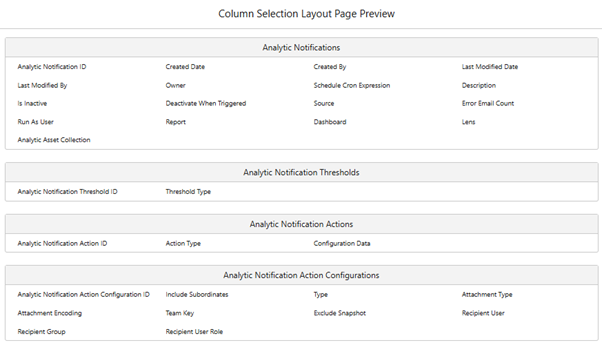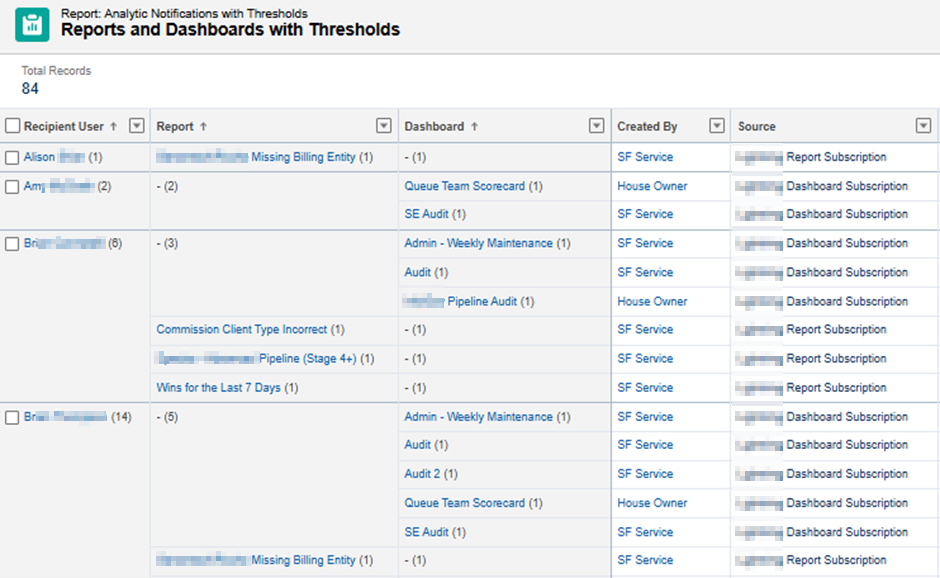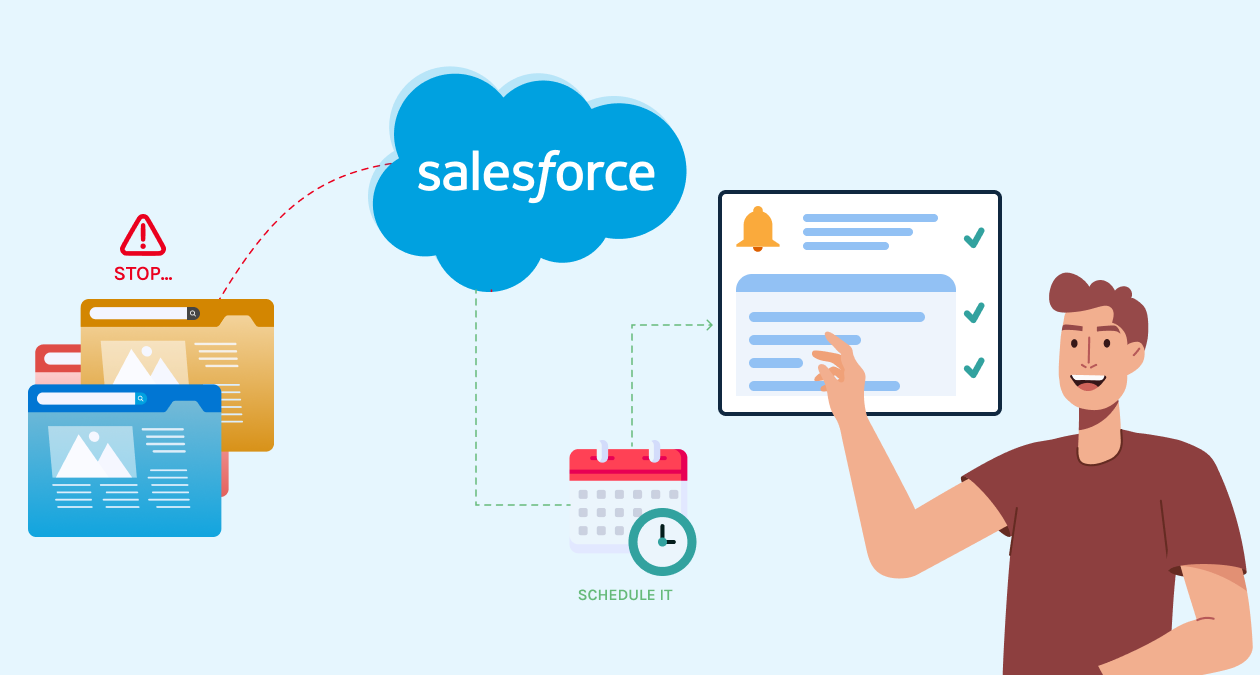Introduction
Salesforce Analytics delivers powerful insights through reports and dashboards. But when it comes to tracking scheduled reports and dashboards, many admins are left puzzled. Why? Because Salesforce doesn't offer an intuitive way to view what’s scheduled, who created it, or who receives it — all in one place.
This blog uncovers a lesser-known solution: the Analytics Notification custom report type, which helps you easily view and manage all scheduled reports and dashboards in your org using a simple report of Salesforce scheduled reports viewer.
What Are Analytic Notifications in Salesforce?
Analytic Notifications are automated alerts that trigger when certain conditions are met in a Salesforce report or dashboard. These notifications keep users informed without needing to manually track scheduled reports in Salesforce.
But there’s more to them — these notifications are also the key to unlocking Salesforce’s hidden schedule viewer.
The Challenge with Scheduled Reports & Dashboards
While Salesforce technically lists scheduled reports and dashboards in the Scheduled Jobs section, the entries are vague — showing only generic job names like "Reporting Notification". There’s no easy way to know:
- What exactly is scheduled — a report or a dashboard?
- Who created it?
- Who are the subscriber members?
- When exactly is it scheduled?
Adding to the challenge, Salesforce allows a maximum of 20 scheduled reports per user. Without a clear view, users often struggle to identify which reports they've scheduled — making it hard to delete unused ones and free up room for new schedules.

The Solution: Analytics Notification Custom Report Type
To solve this, Salesforce provides a hidden gem — a custom report type on Analytic Notifications.
This powerful report allows you to track all scheduled reports and dashboards, along with details like their schedule time, owners, recipients, and more. It also helps users manage their Salesforce report scheduling limit of 20-report by giving them visibility into what they’ve already set up.
How to Create a Custom Report Type on Analytic Notifications
- Navigate to Setup → Search Report Types in Quick Find
- Click New Custom Report Type
-
Fill in the details:
- Primary Object: Analytic Notifications
- Click Next
-
Click “Click to relate another object” and add
the following in
order:
- Analytic Notification Thresholds
- Analytic Notification Actions
- Analytic Notification Action Configurations
- Click Save
Your report type is now ready to use!

Key Fields to Include in the Report
When building a report with this custom type, be sure to include:
- Scheduled Report/Dashboard Name
- Created By (User who scheduled it)
- Run As User (The user context it runs under)
- Schedule Cron Expression (Time/date of schedule)
- Recipient User (Subscribed members)
These fields give you full visibility into your org’s analytics scheduling.

How to Create the Report
Do your homework
- Go to App Launcher → Search for Reports
- Click New Report
- Choose the custom report type you created
- Click Start Report
- Add relevant fields and filters
- Click Save & Run
- Optionally, Subscribe to this report for regular notifications


Conclusion
Salesforce Analytic Notifications are more than just alerts — they’re a smart way to track key data automatically. But more importantly, when used with a custom report type in Salesforce, they unlock transparency around scheduled reports and dashboards that Salesforce doesn’t provide out of the box.
By also helping users stay within the 20 scheduled report limit per user, this solution makes it easier to clean up unused schedules and create space for new ones.
By leveraging:
- Report-based notifications
- Dashboard subscriptions
- Custom reporting on Analytic Notifications
You can stay on top of every scheduled insight — without the guesswork. This approach boosts visibility, empowers admins, and helps your team make timely, data-driven decisions. Apart from the Salesforce scheduled reports viewer, helping you view reports and track schedule reports, you can get your handling issues rectified with Salesforce maintenance services.
Start tracking smarter. No more surprises.
Connect with our Salesforce experts to know more about this dashboard and report viewer.







